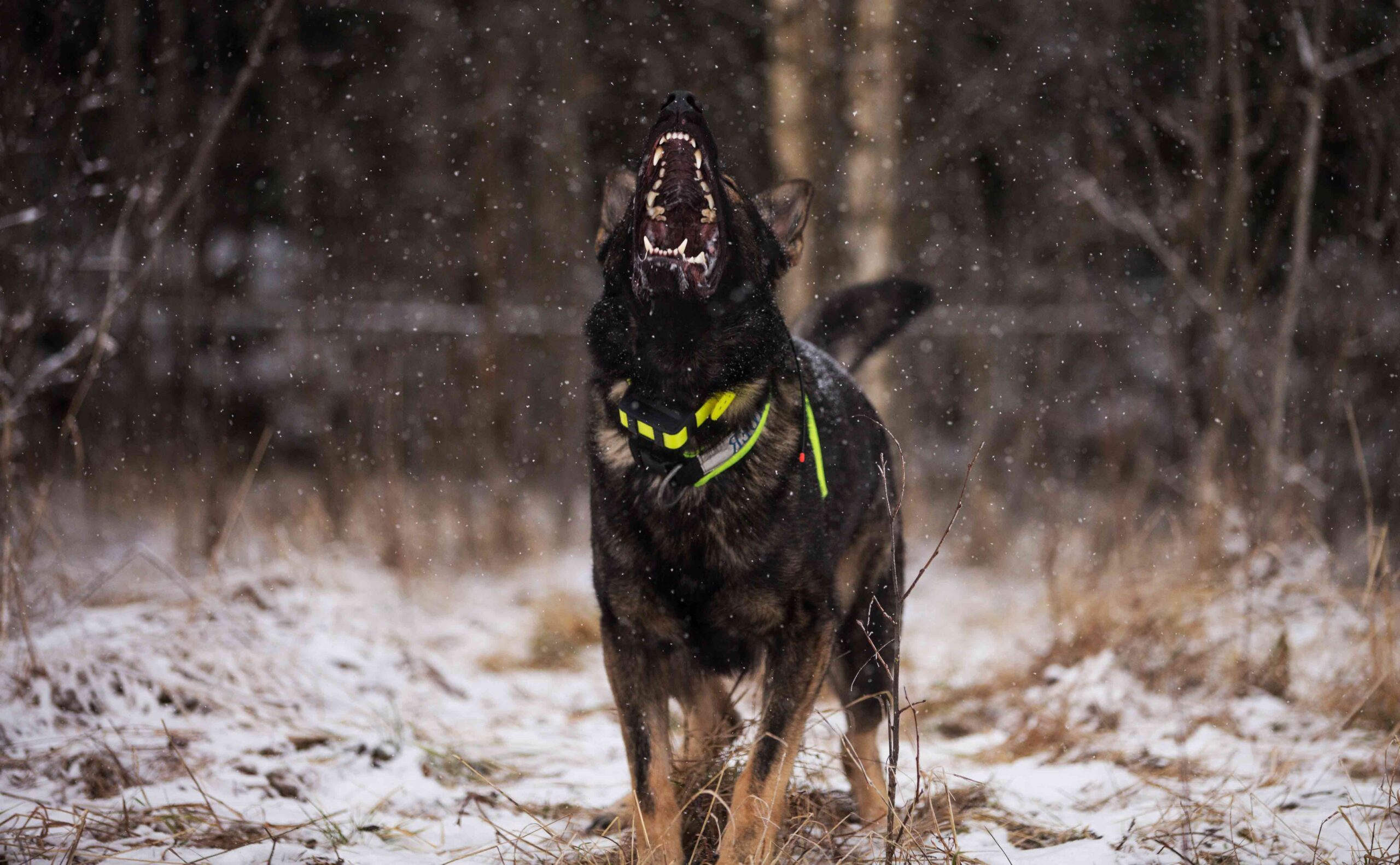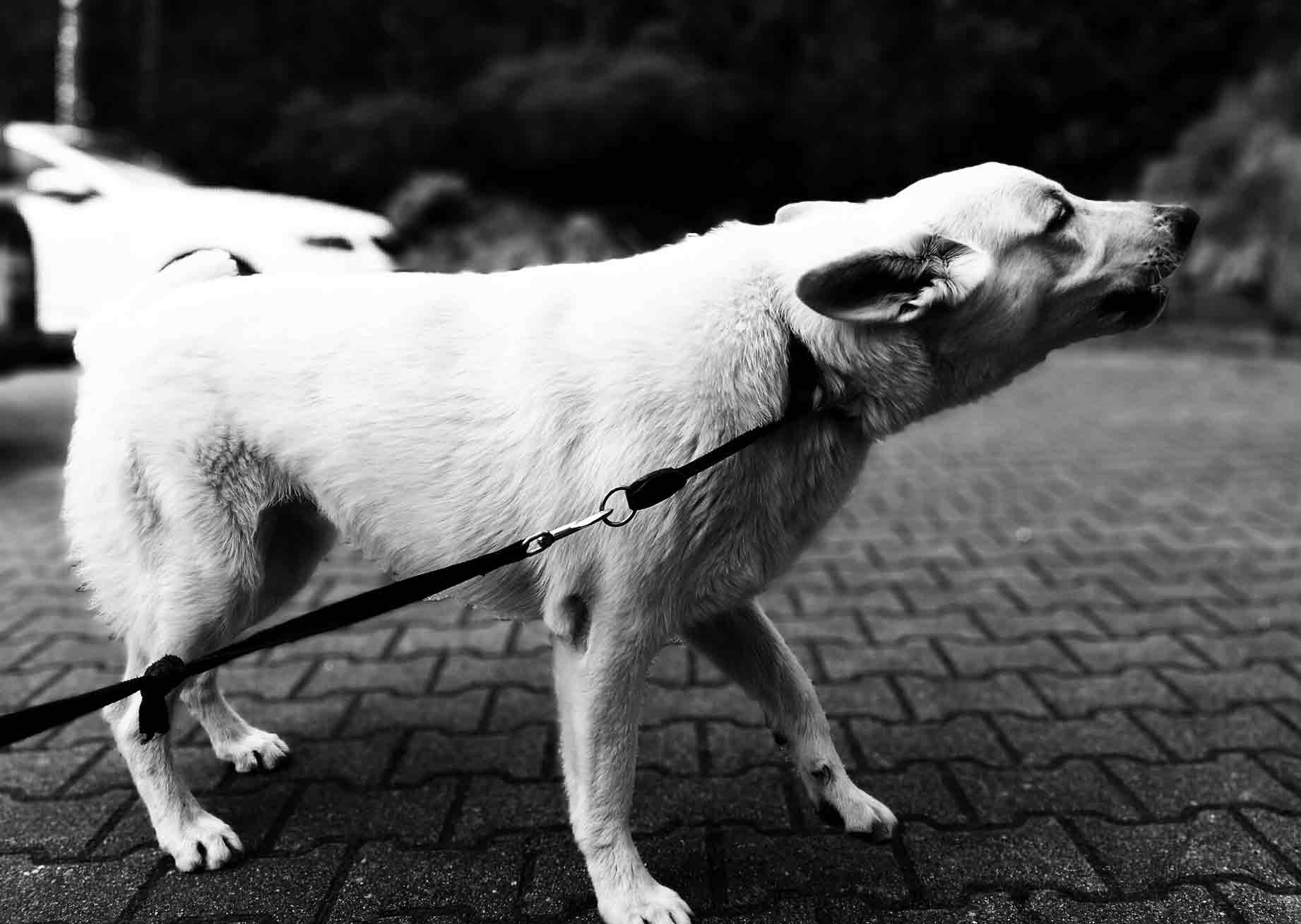
Nobody wants to live with a dog that barks constantly and non-stop, but it can be tough to figure out how to train your dog to stop barking at everything that passes by the house. Use these 10 proven ways to train your dog to stop barking and make your life easier!
1) Teach Them Not to Bark in Certain Situations
Dogs bark for many reasons, but they typically only do it when they’re feeling threatened in some way. If your dog is barking while you’re at home, he may feel uncomfortable with your absence. Confine him in a small room where he can see you around corners and through doorways, and put on TV shows or music.
Dogs usually won’t bark if other dogs are present or other people interact with them. If there’s no visual or auditory distraction, then your dog will learn that nobody’s coming in through that door—and he won’t have to worry about it barking.

2) Always Address the Behavior
Even if your dog barks a lot, most likely, there’s some other behavior associated with it—your dog might be barking out of boredom, anxiety, or frustration.
Identifying why your pup is barking will make training them much more accessible. For example, if you notice that your dog goes nuts whenever someone visits, teach him that calm behavior is expected when company comes over—that’s an excellent way to keep things under control! If your pup tends to bark every time you leave her alone for an extended period, try leaving her with something fun like a puzzle toy or stuffed kong—she’ll be preoccupied and calmer instead of having nothing but endless time on her hands.
3) Reward Good Behavior with Treats or Praise
Dogs are motivated by positive reinforcement. When a dog barks inappropriately, it’s up to you as an owner to guide them into making better choices.
When your dog barks at a passerby, offer a treat or deliver some praise. If they stop barking when praised, reinforce their behavior with treats and repeat. Over time your dog will learn that good behavior is rewarded, thus reducing their need or desire to bark in response to external stimuli.

4) Punish Bad Behavior with Timeouts
A Timeout doesn’t necessarily mean sending your dog away. Timeouts can be accomplished by putting your dog in another room or somewhere quiet for a few minutes. You are stopping your dog from getting rewarded for bad behavior by doing so.
He won’t get attention from you if he’s barking, and he won’t be able to annoy his family and neighbors (unless they have him in their own homes).
At first, it might seem like giving timeouts is discouraging good behavior, but that isn’t true—timeouts only work when they are administered immediately after a rude behavior is exhibited. As soon as it happens, yell. No! Clap your hands and put him away until he calms down.
5) Be Consistent
Make sure your dog has a consistent barking routine—meaning you feed, walk, and play with him at roughly the same time each day. This will tell him that it’s his time for some attention whenever he sees someone walking by.
Set Limits: If you don’t want your dog to bark during certain times of day, such as during sleeping hours or when people are over for dinner, make sure he knows which hours are off-limits.
If he begins barking outside of these times, let him know in a firm voice (but not so loud that you scare him) that it is not okay and then ignore any additional barking for at least 10 minutes. After 10 minutes have passed, if he persists, take away something he loves like toys or treats.

6) Start Training Young Dogs
If you’re adopting a puppy or dog, one of your first orders of business is training. It would help if you started as early as possible.
You might be tempted to ignore training sessions at first—especially if your pup isn’t trying his most complex—but it’s better if you stick with it in the long run. If he gets used to an exercise as a pup, it will be much easier for him when he becomes an adult, and older dogs are more likely to respond well to exercises they did when younger than those they learned later on.
Start by rewarding your dog each time he performs what you want him to do, whether that means sitting or going into another room quietly.
7) Practice Basic Commands Early On
While it’s true that you can’t fully house-train a dog until they are about a year old, if you teach your basic dog commands from early on, then it will be easier for them to learn how to respond correctly when left alone at home. The ASPCA recommends teaching basic commands, including come, sit, and stay.
When you train your dog new things, always give praise as soon as they start doing something right. It will reinforce in their mind that they did what you wanted. Also, make sure that they are getting enough physical activity throughout their day; dogs with plenty of exercise tend to be more relaxed and settle down quickly when left at home by themselves.

8) Understand That Some Dogs are More Vocal Than Others
All dogs bark, but not all dogs bark excessively. The key is recognizing whether or not your dog’s vocal behavior is typical for his breed.
Some breeds are more likely to be talkative, so while it may seem like your German Shepherd talks a lot, if he’s following breed standards and other Shepherds are just as chatty, he could be pretty standard. If you want to curb excessive barking from your dog, first start by talking with a professional trainer about what seems normal for your dog’s breed and tailoring training techniques based on that information.
Also, try consulting with a professional dog trainer who can help you narrow down what factors in your particular situation might be causing problems.

9) Understand What Motivates Your Dog
The first step in training your dog is figuring out what motivates him, and barking is no different. While multiple factors could be causing or contributing to your dog’s incessant barking, pay attention and see if you can figure out any patterns.
For example, does your dog bark at strangers when they arrive at your house? If so, that might be a sign he’s afraid of new people or stimuli. To train him not to bark anymore, you have some work ahead of you! You might start by rewarding him when he remains quiet around new people (and only do so after he settles down). The idea here is that you want your dog to associate staying calm with getting praise from you.
10) Don’t Let Up—Even When You Think They Know What You Want
It’s easy to assume your dog knows what you want when they seem to understand a simple command like sit or come. But even with those, make sure you stick with it for another month or two.
Dogs, just like children, need time and repetition before commands sink in. And once they do, stick with them so they have time to learn what you want when you give that command.


